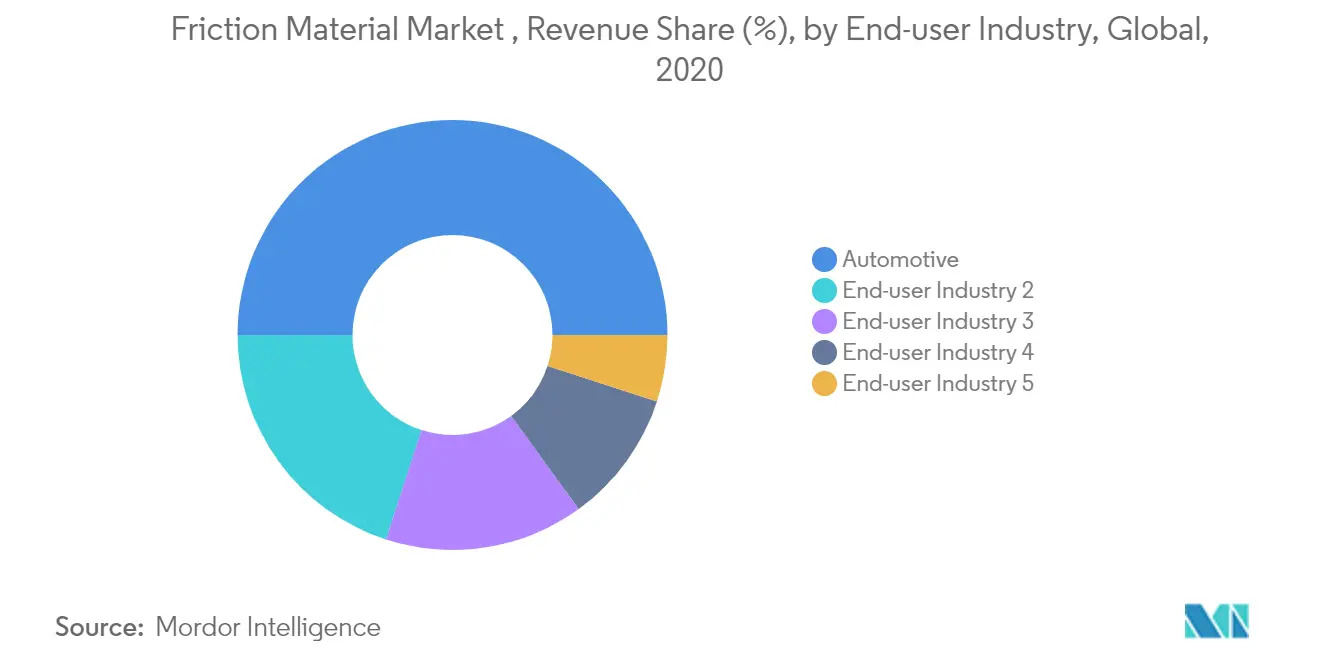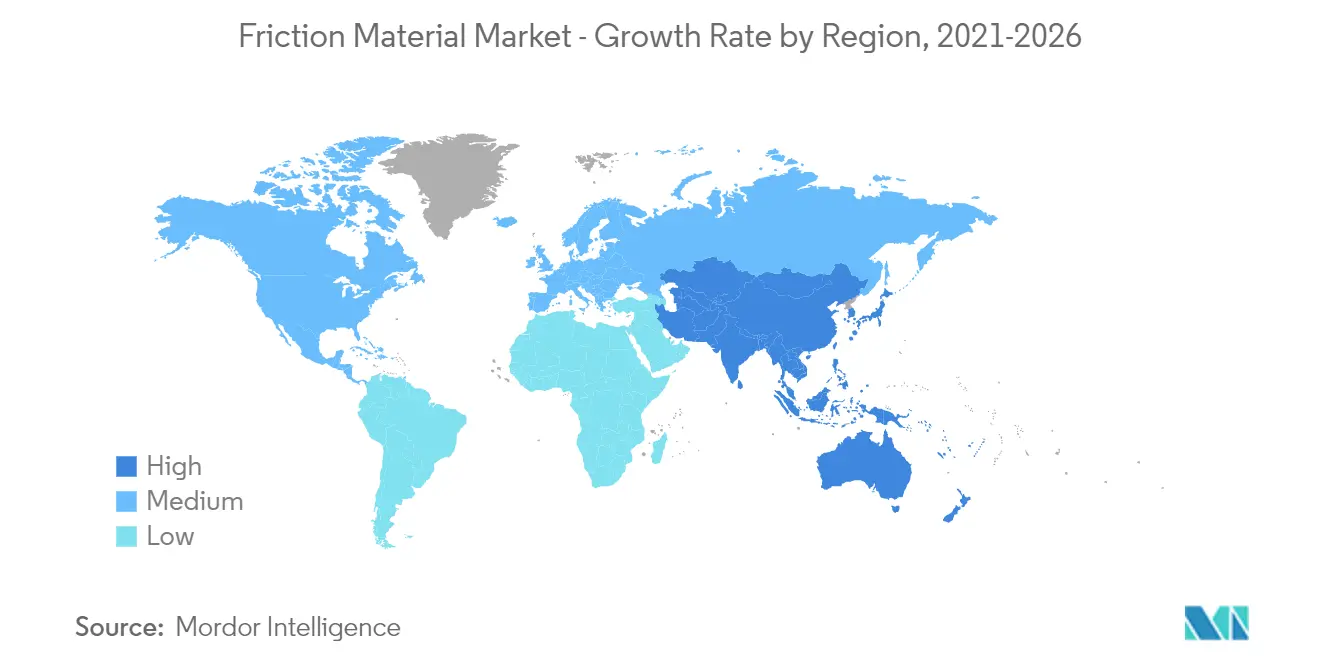Market Trends of Friction Material Industry
This section covers the major market trends shaping the Friction Material Market according to our research experts:
The Automotive Industry Dominates the Market
Friction materials have been increasingly used in both light- and heavy-duty vehicles. In vehicles, friction materials find their applications in clutches, brakes, and gears, among others.
Friction brakes are used to decelerate a vehicle by transforming the kinetic energy of the vehicle to heat via friction and dissipating that heat to the surroundings.
Among all the materials used, sintered metal materials are well-suited for heavy-duty applications, such as mining vehicle transporters.
Ceramic material clutches can withstand considerable heat, and they can operate without fading at temperatures up to 550°C due to repeated engagement and disengagement of the clutch. This heat resistance property makes them ideal for racing applications and for use in brake technology in various high-end automobiles.
The automotive industry has seen a slowdown in the past three years. According to the International Organization of Motor Vehicle Manufacturers (OICA), automotive production witnessed a 15.8% decline from 92,175,805 units in 2019 to 77,621,582 units in 2020. Also, the sales of automobiles declined from 90.42 million units in 2019 to 77.97 million units in 2020.
The decline is majorly attributed to the reduced production in the major automotive hubs such as the United States, China, Japan, and Germany. In 2020, these countries witnessed a decline of 19%, 2%, 17%, and 24%, respectively, compared to 2019.
Therefore, the aforementioned factors are expected to significantly impact the market in the coming years.

The Asia-Pacific Region is Expected to Dominate the Market
Asia-Pacific is expected to dominate the global market due to the vast industrial and automotive sectors in China and India, coupled with the continuous investments done in the region to advance the construction sector.
The growing demand for trucks, buses, trains, industrial machines, and robots in China and India drives the demand for friction materials in various applications.
The Chinese automotive manufacturing industry is the largest in the world. The industry witnessed a slowdown in 2018, wherein production and sales declined. A similar trend continued, with production witnessing a 7.5% decline in 2019. Additionally, the production volume reached 25.23 million vehicles in 2020, registering a decline rate of about 2% compared to 2019.
As the pandemic spread, many auto companies across the country shut down their manufacturing activities due to the nationwide shutdown. In addition to the auto companies based in Hubei, Tesla's new factory in Shanghai was shut down and postponed the production date of its Model 3. Moreover, Volkswagen postponed production at all of its Chinese plants that run in partnership with SAIC.
Additionally, around 3.39 million vehicles were produced in India during 2020 compared to 4.52 million vehicles produced in 2019, witnessing a decline rate of about 25%.
Friction materials also find applications in the railways. According to IBEF, the Indian Railways operates one of the world's largest rail networks, with a route length of 1,23,236 kilometers, 13,523 passenger trains and 9,146 freight trains, and transporting 23 million passengers.
The aerospace manufacturing sector is also growing rapidly in India and China, which is expected to increase the demand in the market. According to Boeing Commercial Market Outlook 2020-2039, around 17,485 new airplane deliveries will be made in the Asia-Pacific region during the period of 2020-2039. With this addition, the total airplane fleet volume in the region will reach about 18,770 units by 2039, which is expected to enhance the demand for friction materials.
Therefore, the aforementioned factors are expected to have a significant impact on the market in the coming years.


